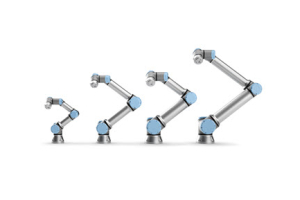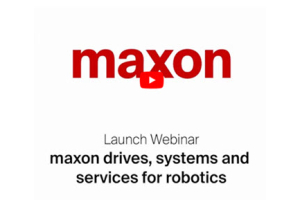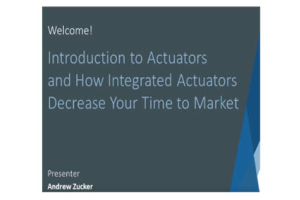PowerPoint Presentation by Gary Rosengren, Director of Engineering at Tolomatic
The lead screw is an essential component in many electric linear actuators. When selecting the type of lead screw a linear actuator should have, you need to strike a balance between purchase price and performance characteristics to get full value.
This new slideshow from Tolomatic shares the advantages and limitations of acme, ball and roller screws (the three screw types used in linear actuators.) The slideshow also describes the application characteristics most suited to each screw type.

Acme Screws
 Acme screws have a trapezoidal tooth form that’s very strong. They come in a variety of leads and diameters to fit many electric linear actuator applications. Nuts can be made from metals (which require lubrication to overcome friction) and self-lubricating plastics.
Acme screws have a trapezoidal tooth form that’s very strong. They come in a variety of leads and diameters to fit many electric linear actuator applications. Nuts can be made from metals (which require lubrication to overcome friction) and self-lubricating plastics.
Acme screws operate quietly and are usually low cost. They can be very inefficient because they need high motor torques to drive them due to the friction inherent in the sliding action between screw and nut. But because of this friction and thread geometry, acme screws may reduce or eliminate back driving.
An acme screw is a good choice in applications that require slow speeds and low duty cycles. However, variables such as nut material, environmental factors and the demands of the application affect the wear characteristics of acme nuts, so it can be difficult to predict the service life of these screw/nut systems.
Ball Screws
Ball screws are very popular in linear actuators. They get their name from the re-circulating  ball bearings that fit between the arch-shaped screw and nut threads. The ball bearings transmit force and relative motion very efficiently as they roll through one or more circuits in the nut.
ball bearings that fit between the arch-shaped screw and nut threads. The ball bearings transmit force and relative motion very efficiently as they roll through one or more circuits in the nut.
Ball screws are available in many diameters, leads and accuracies. Under ISO 3408, they’re classified by lead accuracy in one of five grades – 1, 3, 5, 7 or 10 – with grade 1 being the most accurate.
Ball screws have higher thrust capabilities, longer service lives and higher efficiency than acme screw systems. On the downside though, some ball screws can be back driven easily (depending on the lead), are higher cost and can be noisy. They’re ideal for applications that require high duty cycles, high thrust and high speeds.
Roller Screws
 Roller or planetary screws have triangular-shaped threads which match up with multiple threaded rollers in the nut. These rolling elements create a highly effective system for transmitting force, even better than that of a ball screw. Like ball screws, roller screws are classified by lead accuracy into five grades.
Roller or planetary screws have triangular-shaped threads which match up with multiple threaded rollers in the nut. These rolling elements create a highly effective system for transmitting force, even better than that of a ball screw. Like ball screws, roller screws are classified by lead accuracy into five grades.
Roller screws have very high force transmission capabilities since the rollers have significant contact with the screw threads. They come with a higher price tag though, which is balanced by the fact that they are long lasting, capable of high speeds and quick acceleration, and require little maintenance. Some roller screws may be back driven, though, depending on the lead.
Roller screws are best suited to applications where their high performance and long service life outweigh their initial purchase price.
More information on Tolomatic’s Product Family can be viewed at-
https://www.electromate.com/products/?partner=1175527175
For more information, please contact:
EDITORIAL CONTACT:
Warren Osak
sales@electromate.com
Toll Free Phone: 877-737-8698
Toll Free Fax: 877-737-8699
www.electromate.com
Tags: Electromate, Tolomatic, Linear Actuator, Electric Linear Actuator, Rodless Cylinder, Rod Style Cylinder





